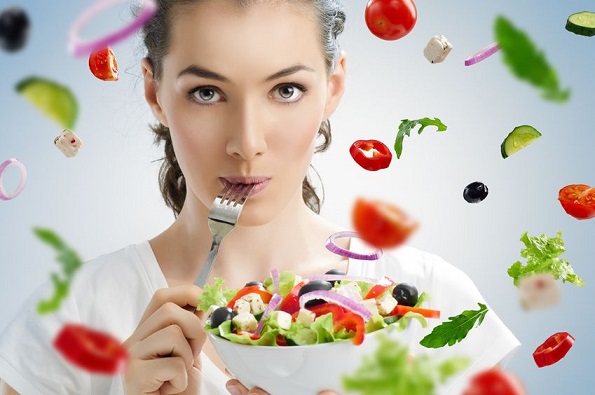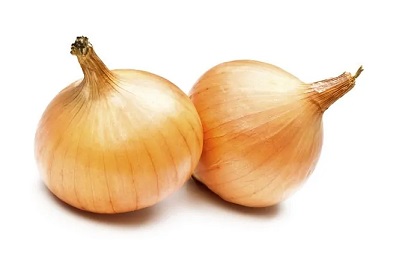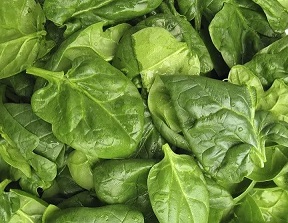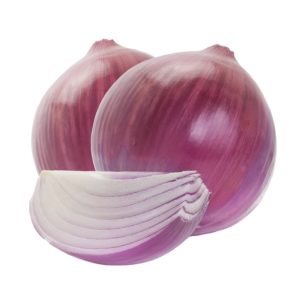 Quercetin isn’t the most popular antioxidant in health stores. It doesn’t compare to resveratrol, which has the automatic advertising appeal of being from red wine, a marketing company’s dream. Driving down the high street, you rarely see billboards boasting of lifechanging quercetin supplements with a supermodel holding a wine glass in her hand. Its best food source is onions, so the art department would have a serious problem on their hands.
Quercetin isn’t the most popular antioxidant in health stores. It doesn’t compare to resveratrol, which has the automatic advertising appeal of being from red wine, a marketing company’s dream. Driving down the high street, you rarely see billboards boasting of lifechanging quercetin supplements with a supermodel holding a wine glass in her hand. Its best food source is onions, so the art department would have a serious problem on their hands.
However, quercetin should not be underestimated for acne. Quercetin is easily one of the most widespread antioxidants in nature. Finding great sources isn’t hard – you might have eaten one in your salad yesterday – but its signature acne-clearing power is extremely rare.
Curcumin in turmeric lowers inflammatory chemicals like NF-kabbaB and TNF-a. Allicin from garlic supercharges other antioxidants in your body. Quercetin accomplishes both of those things, but its real secret for your wider acne strategy is fixing your gut health.
Quercetin replenishes the gut
A leaky gut is one of the most underrated problems in the acne universe today.
It’s when the semi-permeable membrane of the small intestine, the tight junction proteins, no longer regulate which substances pass through properly. Inflammatory toxins enter the bloodstream where they don’t belong, while acne-clearing nutrients like zinc became less efficient. It becomes a free for all of heavy metals shoving aside the law-abiding vitamin A to hurtle through.
Leaky gut syndrome has tight links to small intestine bacterial overgrowth (SIBO) and inflammatory bowel disease, which in turn have tight links to acne.
The real problem is its creeping subtlety. Dining on sugar can unleash an explosion of acne within hours, as can drinking coffee or an energy drink. A leaky gut lurks under the surface, creating an invisible, steadily simmering pot of acne.
Where does the onion-dwelling quercetin step in? It improves the efficiency of the tight junction proteins making up the gut lining.
In this study, quercetin increased ZO-2, claudin 1, and occludin in just 6 hours. However, one specific protein rocketed upwards – claudin 4. There’s 20 different claudin forms, all barely understood, but low claudin 4 is regularly observed in people with weakened gut barriers. One possible explanation is that different claudins control different toxins. Quercetin might keep out pesticides, while by increasing claudin 9 instead, resveratrol might regulate heavy metals.
Occludin, meanwhile, is the gatekeeper, the protein that opens and closes the tiny barriers. It’s extremely discriminatory, like a retinal scanner guarded by gun turrets, allowing only pure and healthy substances to enter the bloodstream. Zonulin-2 anchors occludin in place.
In 2013, mice were fed a normal diet supplemented with 0.3% quercetin. Their barrier integrity was rapidly restored and the tight junction proteins ZO-1, claudin 3, and occludin all increased. So did junctional adhesion molecule-A. This is another mysterious protein, but one great fact is confirmed: weakening JAM-A is how alcohol causes a leaky gut (one of its acne dangers).
Their bodily inflammation fell in close correlation with this. A stronger gut translated directly into the expected acne benefit.
The signs are good for this common plant antioxidant. 2 months after eating onion soup for lunch everyday, your acne might become much less inflamed. Your skin tone could brighten and so might your mood. Unlike histamine release (see below), leaky gut syndrome is a persistent menace which brings your entire acne system down a notch.
There’s a lot of worries in blog comments that quercetin is poorly absorbed. From my research, that’s not the case:
ONE: in onions, quercetin’s absorption rate was 52% in the gut, whereas for its fellow source apples, it was 30%.
TWO: after being fed a diet of bilberries, blueberries, and blackberries, rats had 50% higher bloodstream quercetin after one month.
Curcumin from turmeric really does have a bioavailability problem, estimated at just 2%. However, even if quercetin does have poor bloodstream absorption, its leaky gut-healing properties could still take effect, because there’s no barrier to binding with zonulin or occludin.
Quercetin dampens your histamine responses
 This is quercetin’s most famous power. It’s both an independent acne clearer and the other side of the coin to leaky gut syndrome.
This is quercetin’s most famous power. It’s both an independent acne clearer and the other side of the coin to leaky gut syndrome.
The power is restraining histamine, an inflammatory chemical of the immune system, but the one that specialises most in allergic responses. 1 million years ago, histamine dedicated its life to giving humans runny noses, swollen throats and hives. Pimples are another symptom, intentional or not.
The standard, physical power spied under a microscope is binding to the mast cells that produce histamine. Apparently, quercetin prevents calcium ions from entering these mast cells, decreasing their function (study). Another theory is that quercetin stabilises their cell membranes (study), making them less twitchy and prone to blasting things.
However, quercetin even burrows down to the genetic level. Histamine receptor 1 (H1R) is the gene behind particularly savage allergic reactions, including hay fever, and almost certainly acne. Taking quercetin for 3 weeks suppressed H1R mRNA, and the nasal allergy symptoms accompanying it (study).
Regardless of why, this spinach antioxidant controls histamine and it does it well. In one human study, quercetin restrained the fury of mast cells more effectively than the anti-asthma spray cromolyn. This is the best study yet, simply because it’s on humans.
The anti-histamine evidence is expanding like the big bang; the calcium ions study dates back to 1977. It concluded that “quercetin had an immediate inhibitory effect on histamine secretion“.
By dumping cucumbers for onions, your sudden and severe acne outbreaks could switch to predictable and mild. If you’re constantly walking through a minefield of allergies, then quercetin could be a gamechanger.
Allergic acne particularly depresses people, because it’s hard to dodge easily. It’s not like a chemical-filled moisturiser; you have to eat to survive (unless you’re lucky enough to be a brain in a jar). Acne has nothing to do with the gut’s need to reject an orange, but pimples are the simple consequence of too many inflammatory chemicals circulating the bloodstream.
The gut healing, quercetin-acne axis
There’s a leaky gut connection too, as the furious histamine responses slip into the bloodstream more easily, becoming deadlier for acne.
Histamine can even kickstart leaky gut syndrome in the first place, by assaulting the tight junction proteins. In fact, in this rat study, quercetin specifically defended the gut barrier against the inflammatory chemical TNF-a, in a clear parallel to histamine.
The two also share similar root causes, like an imbalance towards malicious bacteria. Coincidentally, that’s yet another promising power of quercetin; in this study, the colitis-causing bacteria citrobacter rodentium retreated in rats.
With it went the inflammatory chemicals it produces like TNF-a and IL-6. Even better, quercetin allowed friendly strains like bifidobacterium and lactobacillus to return. These huge bacterial families churn out anti-inflammatory molecules aplenty, and even serotonin in the case of lactobacillus plantarum and l.brevis.
There’s dozens of random compounds in nature with acne powers. Sulforaphane in broccoli boosts glutathione, while calophyllolide in tamanu oil increases type 1 collagen production.
However, quercetin is probably the single greatest for an acne patient with gut woes.
How to use this secret?
 Firstly, this onion antioxidant is not an instant cure. It’s different to quitting donuts where your skin could clear almost overnight.
Firstly, this onion antioxidant is not an instant cure. It’s different to quitting donuts where your skin could clear almost overnight.
Not even the most elaborate, all encompassing strategy will heal your gut instantly. And that’s another point: like acne overall, there’s no single cure.
For example, the four pillars of the gut healing colosseum are…
ONE: decreasing sugar, to disconnect the fuel source of candida yeasts, which crowd out beneficial lactobacillus species.
TWO: decreasing gluten, one of nature’s worst substances for tight junction proteins like zonulin, claudin and occludin.
THREE: decreasing FODMAPs, natural carbohydrates which fuel bad bacteria in the susceptible.
FOUR: eating any probiotics or prebiotics that you see (legal disclaimer: don’t take literally). The former are bacteria-rich foods, the latter are foods with compounds that fuel healthy bacteria like epicatechin in dark chocolate.
Quercetin is definitely less important than these strategies. These are the fundamental dietary pillars, although they can each be relaxed once the allergies are fading and the gut has healed.
Instead, quercetin’s niche is as an acne-clearing superweapon that supercharges your progress. If your gut is particularly fragile, then quercetin could tip your progress over the edge.
Quercetin is a supplemental supplement, but a fantastic one. It’s for adding that extra bit of speed. Or, of course, it’s for if you have no patience whatsoever…
Where to get it
The fact is that quercetin is extremely common. By walking down the fruit isle of a supermarket, you are surrounded by quercetin, at a microscopic level, but the levels are often tiny.
It’s confusing, because most articles rattle off the sources like a machine gun, but rarely provide quantities. By picking three random internet recommendations, then you could only be eating a handful of milligrams.
So here’s the official lay of the land. Top quercetin containing foods include…
Boiled onions – 19.36mg per 100 grams.
Dark chocolate – 25.00mg per 100 grams.
Raw red onions – 19.93mg.
Asparagus – 14.00mg. Blueberries – 14.6mg.
Other supermarket staples contain…
Apples – 4.42mg. Kale – 7.71mg. Broccoli – 3.21mg. Spinach – 4.86mg
Green beans – 2.73mg. Red grapes – 3.54mg. Raspberries – 0.02mg. Tomatoes – 4.23mg.
Almonds – 0.02mg. Pistachio – 0.02mg.
Quercetin combines a rare power with extreme ease of fulfilment. There’s something on list for everybody.
What about supplements then? For the average acne patient, diet is easily sufficient. Supplements like zinc and vitamin C are vastly more important, but the exception is if you’re on the gut-healing warpath.
A focussed, 2 month supplement plan would be smart, but there’s a problem: most supplements contain quercetin aglycone, with poorer absorption compared to isoquercetin, the most abundant form in nature.
The latter is now emerging as a high-tech supplement, and some allergy sufferers report superior results. Some supplements combine isoquercetin with the absorption enhancing black pepper alkaloid piperine.
Isoquercetin is what I’d choose, but any supplement extracted directly from plants will do, and this Thorne Research Quercetin (amazon link) fits the bill.
Now, here are two extra powers that have nothing to do with skincare…
BONUS #1 – lifespan
 One reason why quercetin isn’t a nutritional superstar like resveratrol is that extending your lifespan appeals to everyone. Living to 100 is far more exciting than “increasing the efficiency of tight junction proteins to restore intestinal permeability”.
One reason why quercetin isn’t a nutritional superstar like resveratrol is that extending your lifespan appeals to everyone. Living to 100 is far more exciting than “increasing the efficiency of tight junction proteins to restore intestinal permeability”.
But hang on – quercetin has some obscure, but equally promising studies. Somehow, this onion antioxidant managed to extend the lifespan of yeast cells by 60% (study) and Caenorhabditis elegans worms by 15% (study). The quercetin-chomping worms had more efficient stress responses.
Could quercetin extend your own life, as a happy side effect of your acne-clearing mission? This 2013 study was more contradictory: “our results do not support the idea that isolated phytonutrient anti-oxidants… are potential longevity therapeutics“. Quercetin was fed to living animals (mice) starting from the 12th month of life, with curcumin, blueberries and pomegranate also tested.
Cell cultures don’t always reflect a living body where there’s so many competing molecules to factor in. However, the only seriously negative takeaway is that quercetin isn’t miraculous alone. If you really dedicated yourself to antiageing, then you would combine numerous smaller longevity secrets.
Originally, the theory was that quercetin increased DAF-16. That’s a gene controlling oxidative stress, stress responses, and seperate longevity genes like BB68. Fountain of youth hunters are very interested in DAF-16, but in the worm study, they still lived longer when DAF-16 was deactivated. Quercetin could act in multiple ways.
BONUS #2 – your mind
Like with gut health, the extremely common quercetin has an extremely rare brain power.
It decreases COMT, an enzyme which degrades neurotransmitters such as dopamine in the intracellular spaces of the brain. Quercetin decreases COMT by degrading into a separate compound called S-adenosyl-L-homocysteine.
Based on genetics, the amount of COMT people produce can vary 3-4 fold. COMT V158M GG is the slow degrading variant; people call it the “worry gene”. Its carriers supposedly thrive in quiet, high performing environments like a scientific laboratory. Their baseline dopamine is high, giving them steady, persistent motivation, but they also panic in sudden, stressful situations.
Normally, dopamine is a motivating and euphoric hormone, but massively high levels are stress city. “Worry” COMT carriers are the students who prefer weeks-long coursework over 1 hour exams, students that every classroom has.
Their opposites are the AA carriers, the “warrior” gene. These people respond well to sudden threats, as their dopamine shoots up normally. COMT V158M AA carriers would make the perfect cavemen attacked by a cave lion, cave bear, or even a cave troll.
An estimate is that 36% of Americans have warrior genes, 16% have worrier genes, and 48% have the COMT V158M AG mixture.
One study tested 779 10th grade students from Taiwan during a national competitive acceptance exam. After genetic screening, the low COMT gene carriers easily scored the lowest.
Therefore, by decreasing COMT, quercetin could lead to higher stress, non-stop worrying and non-stop acne…
…but in my opinion, increasing dopamine is a fantastic power to have. If anything, most people have chronically low levels. Abusing computer screens and sugar downregulates your dopamine production, causing lethargy, lack of enthusiasm and boredom. Dopamine is a big player in happiness alongside serotonin.
Most dopamine boosters are like sugar or cocaine: they feel fantastic in the moment, but ultimately overwhelm your dopamine receptors and make them shrink. Blocking COMT is much more sustainable, which in turn makes quercetin a fantastic brain-sharpening secret.
The verdict
One acne element we didn’t address was the back to basics powers, like inflammation and oxidative stress. In short: the studies are fantastic.
We have two simple conclusions. Firstly, every acne patient should eat plenty of quercetin, for a healthy buffer against the dark days of gut leakiness. You’ll probably achieve this with my recommended acne-friendly diet anyway, it’s so common.
Secondly, if you’re on a gut healing protocol, then quercetin is your secret weapon for accelerating the pace. I’d bet that almost all acne patients will benefit from two hardcore months of restriction. The Standard American diet and the years of sugar and gluten mania that it entails cannot be underestimated.
It’s in gut heath where quercetin outshines all other antioxidants – which we’ve discovered, that is.
Thanks for reading!